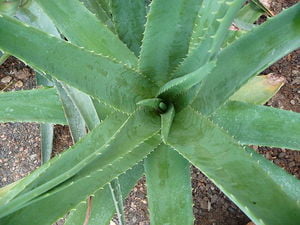Aloe vera is an herbal plant that has been used for centuries for a variety of medicinal purposes in countries around the world. It is also now being used to treat various medical conditions such as asthma, diabetes and arthritis and various gastrointestinal disorders. The Aloe vera plant is a semi-tropical plant. The plant is said to be originally from Africa but grows quite well in most climates. It can be grown both indoors and out of doors as long as it is placed in the right environment and is properly cared for. Aloe vera has both external and internal health benefits. The International Aloe Science Council states that Aloe vera is used today in nutritional drinks, as a healing agent, and is also used in many cosmetics.
What ingredients are in Aloe vera?
Aloe vera contains ingredients such as vitamins, enzymes, amino acids, minerals and much more. It contains approximately seven of the eight essential amino acids, the building blocks of protein that the body needs to grow and function properly. Vitamins found in Aloe vera include many of the B vitamins, vitamins A, C, E, niacin and Folic acid. Other minerals such as copper and zinc are also found in Aloe Vera.
External Uses of Aloe vera
One of the most common uses of Aloe vera is for the treatment of burns. It is often applied to help sunburns, but any type of skin break such as a cut or abrasion can be helped by applying Aloe vera. Some form of Aloe vera gel, cream or ointment should be a staple in any first aid kit. This herb is known to have natural antiseptic properties, which is good for preventing infection. In this way it promotes healing. The pulp of the Aloe vera also acts as a sealant to the affected area.
Internal uses of Aloe vera
Known to be a great cleanser, Aloe vera is helpful for most body systems, especially the digestive system, kidneys and bladder. It is also a great immune booster to help ward off diseases. Aloe vera can be taken in juice form and is useful for cleaning the intestines of bacteria and relieving constipation. It is known to be helpful to people with conditions such as ulcerative colitis or irritable bowel syndrome. The Mayo Clinic states that Aloe vera is an effective laxative. Aloe vera juice has detoxification properties for the bloodstream as well. Aloe vera juice can be taken daily.
How to use an aloe leaf for burns
Many people keep an aloe vera plant in their home as a handy and inexpensive way of treating certain minor injuries such as burns, minor cuts, insect bites and wounds, and some skin conditions. A burn can be serious and is very painful, so before applying the Aloe vera be sure to first cool the burn by holding the burned area under cold running water. Some people may be sensitive to the yellowish liquid in the Aloe leaf, so remember to always cut away the outer part of the leaf and the yellowish juice. The gel is the only portion of the leaf that you should apply to the affected skin. If you use a commercial Aloe vera gel be sure it’s pure 100% Aloe vera gel. Avoid “watered down” gels or gels that contain dyes or alcohol. Treat the burn by following the steps below:
-Select a plump, outer leaf from the plant. The plant grows from the inside out, so the more mature leaves will be found on the outer part of the plant. Breaking off the leaf will not damage the plant.
-If you are using a leaf from the plant, cut it lengthwise to expose the pulp.
-Using a spoon, scoop out the pulp from inside the leaf and make a paste out of it.
-Apply the paste to the cooled burned area.
Keeping an aloe plant in your home
Aloe vera products can be purchased at health food stores, in cosmetic departments and also bought online. The Aloe vera plant itself is not expensive and can be purchased at a garden shop or nursery or stores such as WalMarts. Purchase an aloe plant that has thick, healthy leaves and place the plant in an area of your home where it can receive adequate sunlight throughout the day. Since this plant is accustomed to a dry climate, you don’t want to overwater it. Allow it to dry thoroughly between watering.
__________________________________________________________
Sources
Garden Guides: “Aloe (aloe vera)”
Aloe Vera Studies:”Aloe vera…myth or reality?”
The International Aloe Science Council: “The complete story of aloe vera”



